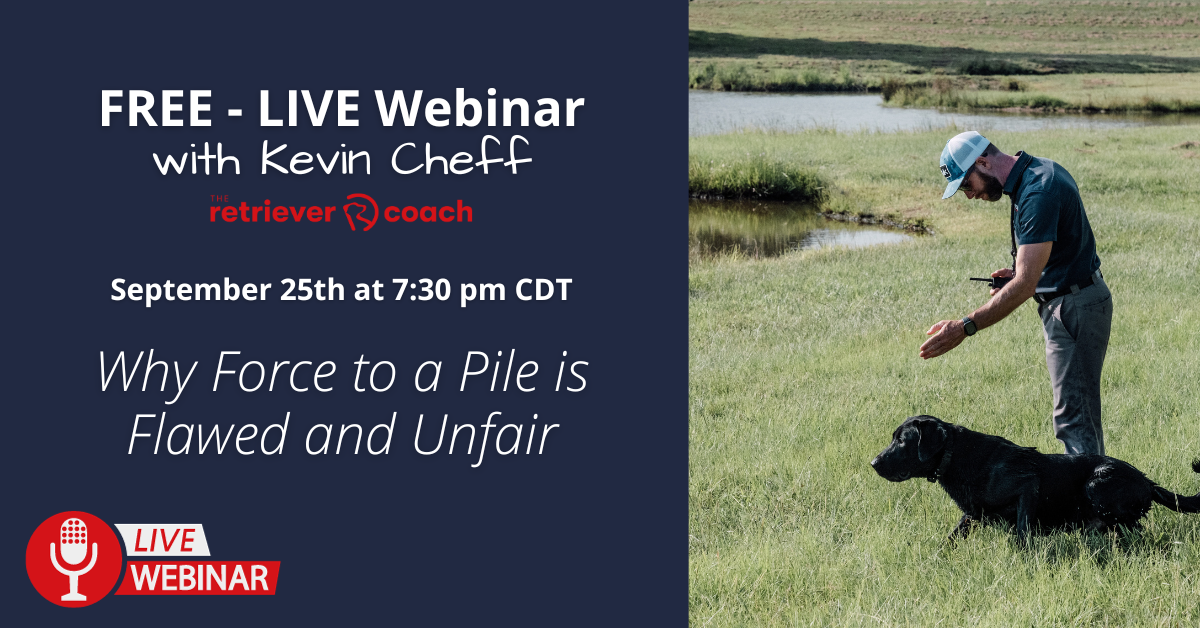Part 2 - Things Must Change If We Want More Dogs To Be Successful
When was the last time you asked yourself “Why am I doing this drill?”
Do you think about what you’re trying to accomplish before you start? Because when we consider that level of detail, what we think is important might change.
For example, let's examine the Single T and Double T. The purpose of these drills is to teach dogs basic handling skills in a yard environment. They focus primarily on casting straight back or over, and on stopping.
After having run these drills for several years with many dogs, I saw some behaviors that were problematic, including bugging, no-go’s, popping, flaring, poor momentum, a lack of confidence, boredom, and low motivation. I also felt that once a dog had completed these drills, they weren't as prepared as they needed to be for handling on blinds and marks in the field. I decided I needed to take a closer look at the process, and see if there were any adjustments that I could make to improve the outcomes.
I began by asking myself the question, “What am I trying to accomplish by running this drill?”. The quick answer is “I want to teach my dog to handle”, but that's not good enough. I needed to dig deeper.
So what did I want instead?
- I want my dog to understand the communication that I’ll be using to prepare for a blind retrieve.
- I want them to target.
- I want them to line in a specific direction.
- I want them to change direction when I ask them to.
- I want to set high standards for stopping, going, basic obedience, and delivering the retrieve.
- I want to condition my dog to e-collar pressure and engrain a proper response to it.
- I want to manage their attitude.
- I want them to work confidently, and enthusiastically without coercion.
- I want them prepared for whatever’s coming next.
Let's move on to the next question now, "Why am I seeing problem behaviors such as bugging, no goes, poor attitude, etc.?“
I looked closely at the procedure, and what I was doing during that time. Bugging, flaring, and momentum issues like popping, spinning, peeking, and no-gos, were usually tied to corrections that were made during previous retrieves. And the behaviors would happen when I was trying to send them back toward the center pile for another bumper. It was only logical to assume, that the dogs were apprehensive about running directly toward a place where they’d just gotten corrected. And if more corrections followed, then the problems only got worse.
There were momentum issues that I felt could be tied to fatigue and boredom. I was asking my dogs to run significant distances and to do the same thing over and over again. While many dogs didn’t have a problem with this, other dogs simply lost their enthusiasm due to the monotony of the drill.
The last thing I felt was that dogs were not as prepared as they needed to be for swim-by, pattern blinds, cold blinds, and handling on marks. They didn’t have enough experience with the act of preparing for a blind retrieve and hearing the language that we use to do that. They were very weak at targeting too. A lack of training with angle back casting meant their handling was very poor. Finally, an insufficient amount of handling on land and opportunities to enforce stopping and going, especially with a bumper in their mouth, could make swim-by very difficult and quite stressful.
Once I clearly understood what the problems were and why they were happening, it was time to get to work on making changes and evaluating how effective they were. The above video talks about evaluating your process and making changes to achieve better outcomes. I show you the Advanced T, the drill I use instead of the Single or Double T, and explain why I see significantly fewer problem behaviors these days.
Last week, I made a bold statement - Conventional Training Methods Are Causing Some Dogs To “Wash Out” Unnecessarily. One area of great unfairness is Force to a Pile. I think it is technically flawed and punishes dogs who are trying.
On Monday, September 25 at 7:30 PM CDT, I’ll be hosting a live event where I’ll explain why I feel this way, and how we can make changes to improve outcomes. The webinar is free but you must register in advance.

